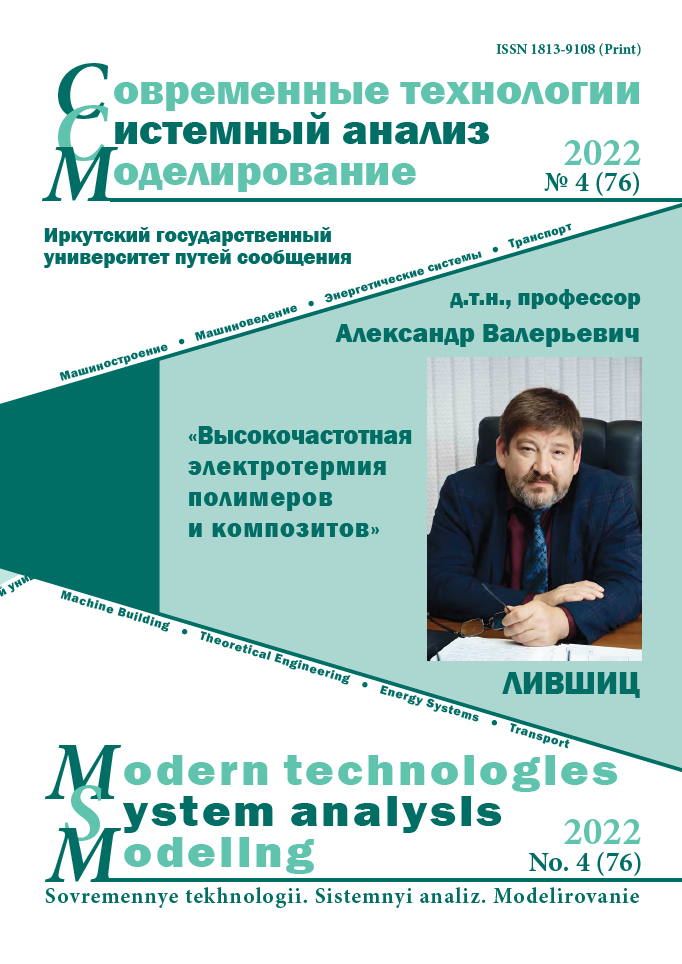Improving the control system of the electrical circuit integrity of electropneumatic brakes in a railway passenger train
Keywords:
electropneumatic brakes, electrical circuit integrity monitoring system, passenger wagon, brake line equipment, voltage and current sensors, microcontroller, locomotiveAbstract
The control system of the electric circuit of electropneumatic brakes installed on the locomotive notifies the driver only of its violation, but does not indicate the exact place where a malfunction occurred in the electric circuit. To reduce the time of troubleshooting, to reduce the downtime of wagons during the repair of the electropneumatic brake, a device is proposed that extends the functions of the existing electrical circuit integrity monitoring system to accurately determine the number of the wagon in the train in which there was a problem with the wires, a short circuit or another malfunction occurred. In the developed device, the main source of information about the state of the electrical circuit and the operating modes of the brake line equipment during the movement of a passenger train are voltage and current sensors. When the train is moving, the signals from the sensors are sent to an electronic device that processes the information received, compares it with the voltage and current values recorded in the permanent memory of the microcontroller corresponding to the serviceable condition of the electrical equipment of the electropneumatic brake in various modes of operation of the braking system. When the train is moving, the signals from the sensors are sent to an electronic device that processes the information received, compares it with the voltage and current values recorded in the permanent memory of the microcontroller corresponding to the serviceable condition of the electrical equipment of the electropneumatic brake in various modes of operation of the braking system. If a malfunction occurs in the electrical equipment of the electropneumatic brake, the electronic device generates an output signal. The signal contains encrypted information about the number of the wagon and the type of malfunction that occurred. The generated signal enters the transmitting device and is transmitted via communication channels to the receiving device installed in the cab of the locomotive driver. By the glow of the LEDs located on the front panel of the receiving device, it is possible to determine the number of the wagon and the type of malfunction in the electrical equipment of the electropneumatic brake of a passenger train.
References
Афонин Г.С., Барщенков В.Н., Кондратьев Н.В. Устройство и эксплуатация тормозного оборудования подвижного состава. М. : Академия, 2006. 304 с.
Анализ проблемы отказов при эксплуатации пассажирских вагонов / А.В. Зяблов, А.И. Быков, А.А. Петров и др. // Наука и техника транспорта. 2020. № 4. С. 30–33.
Надежность и функциональная безопасность как основные составляющие качества пассажирских вагонов / С.В. Петров, Г.В. Райков, Ю.В. Корнев и др. // Вестник ВНИИЖТ. 2018. Т. 77. № 4. С. 241–249.
Крылов В.И., Астахов П.Н., Гребенюк П.Т. Справочник по тормозам. М. : Транспорт, 1975. 185 с.
Иноземцев В.Г. Правила тяговых расчетов для поездной работы. М. : Транспорт, 1985. 122 с.
Венцевич Л.Е. Тормоза подвижного состава железных дорог. М. : УМЦ ЖДТ, 2010. 559 с.
Галай Э.И, Рудов П.К., Галай Е.С. Тормозная сила композиционных тормозных колодок по мере их износа на грузовых вагонах // Проблемы безопасности на транспорте : материалы X Междунар. науч.-практ. конф. Гомель, 2020. С. 39–41.
Правила технического обслуживания тормозного оборудования и управления тормозами железнодорожного подвижного состава : утв. 6–7.05.2014 Советом по ж.-д. транспорту государств-участников Содружества. М., 2014. 268 с.
Асадченко В.Р. Автоматические тормоза подвижного состава. М. : Маршрут, 2006. 392 с.
Крылов В.И. Тормозное оборудование железнодорожного подвижного состава. М. : Транспорт, 1989. 487 с.
Абашкин И.В. Инструкция по эксплуатации тормозов подвижного состава железных дорог. М. : Трансинфо, 2005. 160 с.
Бурченков В.В. Автоматизация контроля технического состояния подвижного состава. Гомель : БелГУТ, 2008. 235 с.
Сергеев Б.Б. Автоматические тормоза. Ч. 1. Омск : ОмГУПС, 2007. 31 с.
Галай Э.И., Рудов П.К., Галай Е.Э. Тормозные системы железнодорожного транспорта. Расчет автоматических тормозов. Гомель : БелГУТ. 2014. 271 с.
Гундорова Е.П. Технические средства железных дорог. М. : Маршрут, 2003. 496 с.
Интеллектуальная система тормозной сети поезда / А.М. Худоногов, П.Ю. Иванов, Н.И. Мануилов и др. // Известия ПГУПС. 2018. № 1. С. 130–135.
Баранов В.Н. Применение микроконтроллеров AVR: схемы, алгоритмы, программы (+CD). М. : Додэка-XXI, 2006. 288 с.
Мышляева И.М. Цифровая схемотехника. М. : Академия, 2005. 400 с.
ТОЛ- Новая система управления тормозами для локомотивов / С.Г. Чуев, П.М. Тагиев, С.А. Популовский и др. // Локомотив. 2022. № 1. С. 32–36.


